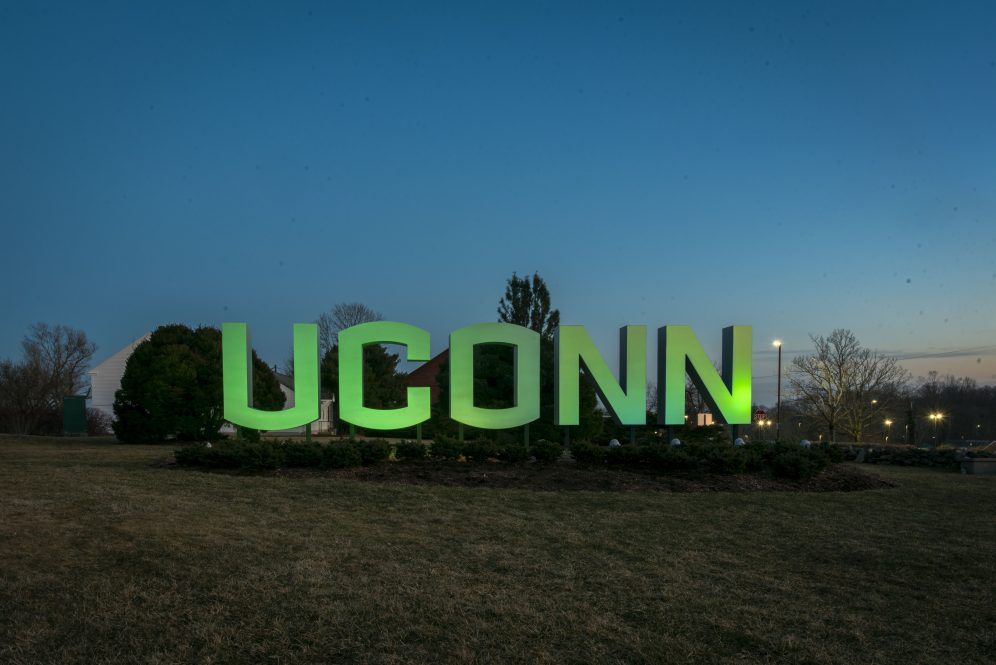UConn plans to conduct a deep dive into energy conservation strategies at scores of sites on the Storrs campus, accelerating its drive toward carbon neutrality by 2030 and underscoring its commitment to sustainable operations.
The UConn Board of Trustees approved plans Wednesday for the University to commission an Investment Grade Energy Audit, a detailed review that follows U.S. Department of Energy guidelines to identify conservation opportunities and their related cost savings.
The audit will be the second phase of an initiative started in 2017, and it will continue and expand on efficiencies initiated under that earlier program and its predecessors to keep finding new ways to lower UConn’s energy costs while reducing its carbon footprint.
The work that started in 2017, known as an Energy Savings Performance Contracting process, took place under a state program that has since expired.
The newly approved plans for the Investment Grade Energy Audit, which is a more thorough review, follows detailed U.S. Department of Energy guidelines under its Federal Energy Management Program.
It involves a detailed accounting of current conditions set the baseline, a deep dive into potential improvements and updates possible at the various sites, and a fiscal accounting of how much money and energy would be saved over time.
Stanley Nolan, UConn’s interim associate vice president for facilities operations, says more than 30 government agencies in all 50 states have used the Federal Energy Management Program since 1998, with about $8 billion invested in 445 projects. Collectively they have decreased carbon dioxide greenhouse gas emissions by more than 2 million metric tons since 1998.
Some of the other entities in Connecticut that have gone through the process include the U.S. Veterans Affairs Health System in West Haven, the U.S. Coast Guard Academy in New London, and Naval Submarine Base New London in Groton.
The audit and the work that it will quantify is part of UConn’s wide-ranging work toward its goal of climate neutrality on campus by 2030 through achieving energy efficiencies in facilities operations, supporting research into clean energy technologies, and offering strong academic programs in related topics across disciplines.
In fact, despite a 44% increase in on-campus square footage since 2000 due to new and expanded buildings, UConn Storrs has reduced its greenhouse gas emissions by 25% from the baseline amounts 20-plus years ago.
The Investment Grade Audit will focus on energy conservation initiatives at Storrs that include:
• Replacing an aging major steam/condensate underground line that provides heat for much of South Campus along Gilbert Road from the Student Recreation Center to the South Campus residence hall currently under construction. Old steam pipes often lack today’s insulation and have other age-related issues that cause them to lose heat, increasing the amount of energy needed to adequately serve the buildings.
• Retro-commissioning about 3 million square feet — about the area of a large shopping mall — of space in 24 buildings to identify and implement energy efficiencies. They include some of the most notable buildings on campus, such as Gampel Pavilion, the Student Union, the Wilbur Cross Building, Homer Babbidge Library, and several other academic and residential buildings.
• Switching traditional lighting to energy-efficient LED lighting in about 2.1 million square feet in 44 buildings, continuing earlier work in which 63 lighting projects were completed in the 2020 fiscal year. They use up to 90% less energy and last up to 25% longer than incandescent bulbs. The earlier initiative already saves about 2.7 million kilowatt hours yearly in energy consumption and achieves more than 1,500 metric tons of greenhouse gas reductions, so the new efforts would build on those successes.
• Exploring the feasibility of adding canopies in 11 parking lots that would generate solar power. Solar canopies look like carports, but have arrays on top to capture solar energy for a variety of uses, such as charging electric vehicles or other options. They also provide shade and protection from the elements for vehicles parked below them and are mounted on beams to avoid reducing the number of available spaces.
The approximately $500,000 approved to pay for the audit will come from UConn’s Renewable Energy Fund, which it established in 2008 to supplement its facilities-oriented sustainability measures.
It includes clean-energy credit funding from government programs along with rebates and incentives from its electricity providers – currently about $5 million annually – all of which is reinvested into programs to reduce UConn’s carbon footprint.
The improvements that will be guided by the audit will pay for themselves: At least $1.5 million will be generated yearly in energy savings and by earning clean-energy initiatives, more than covering the approximately $30 million in the costs to implement the projects over the next 20 years.



